"This," Mads Kornerup, 45, tells me when I arrive at Shamballa Jewels’ uptown Copenhagen showroom, “is the centrepiece of my beliefs and my business.” It’s a giant oblong grey-black stone hung from the ceiling in the middle of the sales floor, steps away from the double-password-protected front doors—a lingam, the symbol of Shiva depicting the male energy of the universe, sometimes seen as a phallic icon.
The 250 kg granite lingam is suspended with iron wires, and catches your eye the moment you enter the store. Kornerup, who started Shamballa Jewels with his brother Mikkel in 2005, says he enjoys telling customers what the piece is. “It shocks them and also takes them out of their comfort zone. That’s how we want it,” he says.
In the world of high-end jewellery, lorded over by names with deep history, Shamballa is a newcomer. Its first avatar was as a store selling pieces sourced from around the world, including India, at the historic Parisian district of Marais, as recently as 1994. In fact, Mads Kornerup had started designing jewellery only a couple of years before that. But what the Kornerups lack in corporate history, they make up for by pitching something few have: Eastern mysticism, with a strong bias for Hindu and Buddhist spirituality.
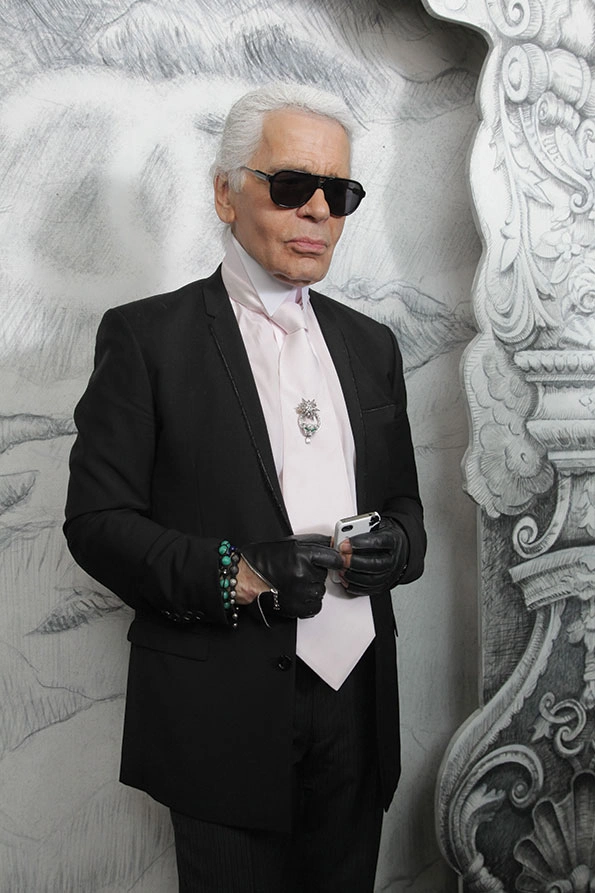
Shamballa would just be an esoteric Scandinavian experiment for men with ecletic tastes—“I still think I design for men than women, though many women now buy our jewellery,” says Mads—a hipster brand if you will, if its products didn’t regularly sell for more than $100,000 (Rs 63.2 lakh) a piece, contributing to wholesale revenue of $35 million in 2014. The company does not reveal its retail and direct-to-customer sales, but industry estimates put Shamballa’s gross annual revenues at $80 million. If that doesn’t impress you, consider that Shamballa’s baubles are worn by Karl Lagerfeld, Jay Z, Princess Mary of Denmark, and Gwyneth Paltrow.
THE STORY OF SHAMBALLA is intertwined with Mads Kornerup’s discovery of Hindu and Buddhist prayer traditions after he left home at 19 to backpack around the world, stopping at Brazil, Peru, Indonesia, Thailand, Japan, India, and Tibet. Shamballa is a word found in Hindu and Buddhist liturgy. In the Vishnu Purana, it is the village where Kalki, the last avatar of Vishnu, is born, and both Buddhist and Hindu texts talk of it as a pure and holy land, a sort of mythical kingdom. A notable item on the company’s directory: the rudraksha bracelets that are seen on the wrists of Shiva in Hindu iconography, and on the wrists and necks of ascetics, made from the dark brown seeds of the rudraksha plant (Elaeocarpus ganitrus) which usually grows on the foothills of the Himalayas. Ancient medicinal wisdom in India holds the rudraksha to be a potent stress buster, helping with focus and in spiritual growth.
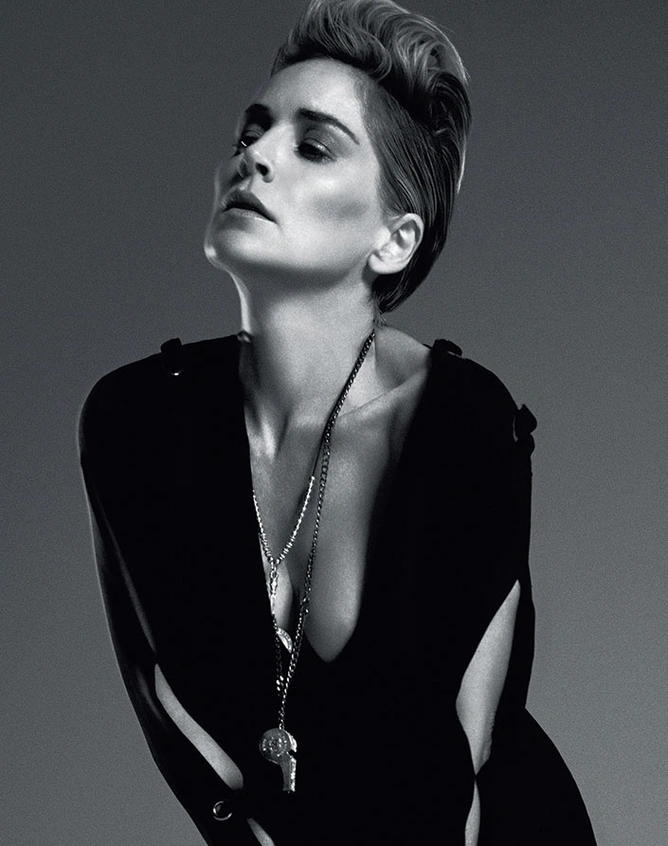
Kornerup tells me his love of fine gems started in Brazil, but it was in India that he found the knowledge that would dictate his calling. “Through my twenties, I was constantly travelling from one holy place to another. I kept returning again and again to India and Tibet, drawn to materials that remind us of the way the universe functions, that we are not separate from the universe around us,” says Kornerup, who with his philosophical bent, passion for yoga, smoky dry hair pulled into a tuft, unkempt beard, and rugged denims appears more like a hike-returned hippy than a jewellery mogul. Kornerup says his dream is to start a store in India at the right time, “which might be sooner rather than later”.
Kornerup opened the Paris store after seeing silver bracelets in the shape of snakes from India at Creole, a shop in Copenhagen. He says he found them “irresistible”. By 1995, there was a Shamballa store at Soho in New York. But importing jewellery though middlemen and traders was not enough. “I felt that I had to know who was making the best of these silver snakes,” Kornerup says.
After months of calling sources in India—traders were naturally cagey about revealing names of craftsmen—Kornerup found that the best silver jewellery maker of the snake design was the Rathod family in Kolhapur, deep in the dusty heartland of Maharashtra. This was in 1996, and Kornerup had been roaming from city to city—Delhi, Mumbai, Jaipur, Agra, Goa—following every lead he could trace. Hiring a rickety Ambassador car from Goa, Kornerup drove 14 hours to reach the workshop of Hanjarimal Rathod. The first thing the Danish designer told the elderly Rathod was he could get him an order from Ralph Lauren.

“But my father didn’t know who Ralph Lauren was and found it difficult to believe such things,” laughs Chandu Rathod, Hanjarimal’s son. Kornerup got his friend Michael Tapia, who had contacts at Ralph Lauren, to fax an order to the intermittent phone line at Rathod’s office in Kolhapur. “I immediately felt when I met Mads that he understood why Indian ideas were special. He was not the usual tradesman. He was looking to understand the philosophies behind the handwork,” Rathod Jr. recalls.
When Kornerup designed the Shamballa logo in 1998, he chose two interlocked vajras, the lightning rod weapon of Indra, the Hindu king of the gods. “My work is influenced heavily by the concept of sringara,” Kornerup says. Sringara is one of the nine rasas or emotions in Natyashastra, the ancient Indian treatise on the dramatic arts, and is concerned with the idea of beauty. “Not just cosmetic beauty, but the idea of beauty in the heart and soul and what feelings it arouses.” That’s why, even now that nearly 50% of Shamballa’s sales come from women, Kornerup refuses to give his jewellery a clear gender identity. He himself is often seen wearing the Shamballa Nataraj, a pendant showing the dancing Shiva, 6 cm tall and equally wide, with 15 white diamonds (22 carats each), 18 octagonal rubies, 14 octagonal blue sapphires, and 8 tsavorites (a form of garnet). The piece is priced at $1,154, 648.
Mikkel Kornerup says the company has “no ideal or fixed customer profile. Our last few customers included a 97-year-old Colombian woman and the Formula 1 champion Lewis Hamilton who got a Shamballa necklace that he had refitted with new stones.”
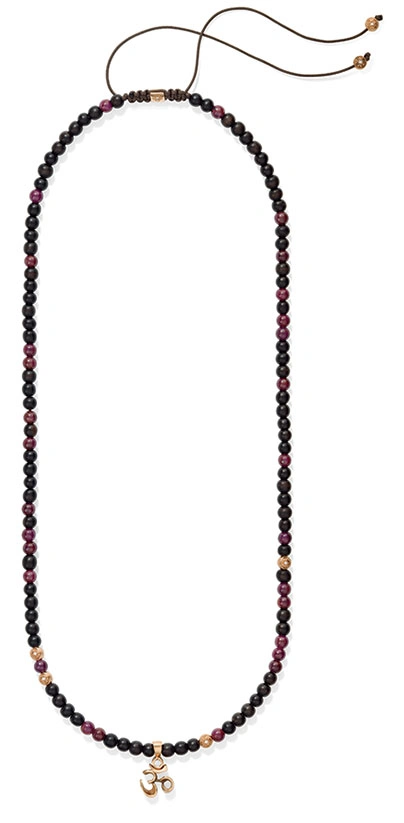

This casual approach to stardom goes back to Shamballa’s history. It first attracted fame when Jay Z walked into the New York store in 2001. The rap mogul wanted jewellery that was different from the bling of rappers. Mads Kornerup made him a gold bracelet inspired by prayer beads, with Jay Z’s initials and zodiac sign strung together by macramé braiding—using repurposed nylon. “Some thought I was crazy to mix gold and diamonds with the humble nylon string,” says Kornerup. Others were astounded he would offer such a thing to the world’s most powerful rap artist. “But for me, the idea was to consciously mix the magical and rare with the humble, everyday, and strong nylon thread ... an aspiration of the balanced life we seek to lead in the materialistic world. Indian prayer beads made of sandalwood and Bodhi tree seeds were a big inspiration, the idea that humble wood can be elevated to a spiritual tool by the value we place on it and by how we use it. That the jewellery by itself has no value until it is used to attain a higher purpose,” says Kornerup.
The search for a higher purpose hasn’t been to the detriment of higher earnings. Revenue rose $12 million between 2013 and 2014, and points of sale around the world grew from 22 in 2011 to 65 today. In 2010-11, sales surged after the company introduced diamond pavé bracelets at $90,0000 a piece, an extension of the company’s earlier work with gold beads, dominated by diamonds. Now their usual diamond pavés come with 120 diamonds and one gold bead. “It catapulted us into the high fine jewellery segment,” says Mikkel Kornerup. Danish supermodel Helena Christensen wore such a piece to the 2007 Vanity Fair Oscars Ball and in 2007 Shamballa won the Rising Star Award at the JCK show in Las Vegas—America’s biggest jewellery fair. Saks 5th Avenue, the mega luxury store, started stocking Shamballa soon after.
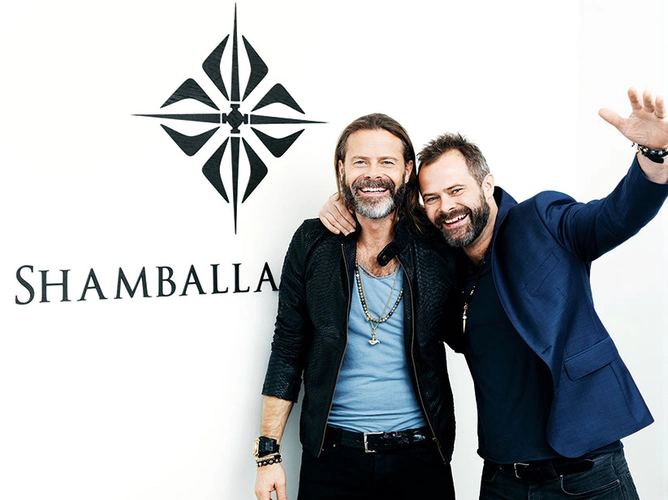
SHAMBALLA’S BIG HEADACHE: mass copying. Mikkel Kornerup accepts that their bracelet is now one of the most copied jewellery designs in the world. Wryly, he points out that a Google search on Shamballa bracelet throws up more than 840,000 results. ‘The influx of cheaper copies caused a dip in revenues initially. But we have been working on newer designs and focussed on making the Shamballa bracelet even better and of higher value with larger diamonds, and rare blue and pink diamonds. This has helped us rise again, and our brand awareness is stronger than ever,” he says.
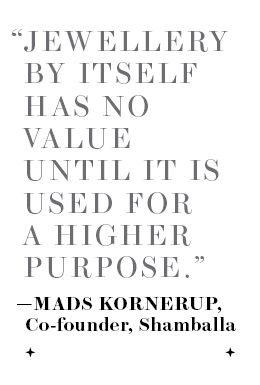
While bracelets continue to be the highest seller (between $4,000 and $150,000), necklaces, far more expensive, are increasingly the high margin earners. The most expensive necklace Shamballa has sold—made of black diamonds on 18 carat white gold blackened with rhodium plating—was worth $700,000. “Currently the most expensive piece we have is a $1 million bracelet with a rare pink argyle diamond,” says Mikkel. Europe brings in 50% of revenue, with Switzerland alone contributing 15%. Many top Swiss luxury watch stores have started stocking Shamballa jewellery because of its focus on men. Germany is the fastest-growing market.
But none of the growth means Mads Kornerup, who started one of the first yoga studios in Copenhagen and still spends hours on yoga every day, is buying a car anytime soon. He still cycles to work, as he has been for a decade. “It is only by handling invaluable gems every day that you learn true detachment,” he says.










Leave a Comment
Your email address will not be published. Required field are marked*